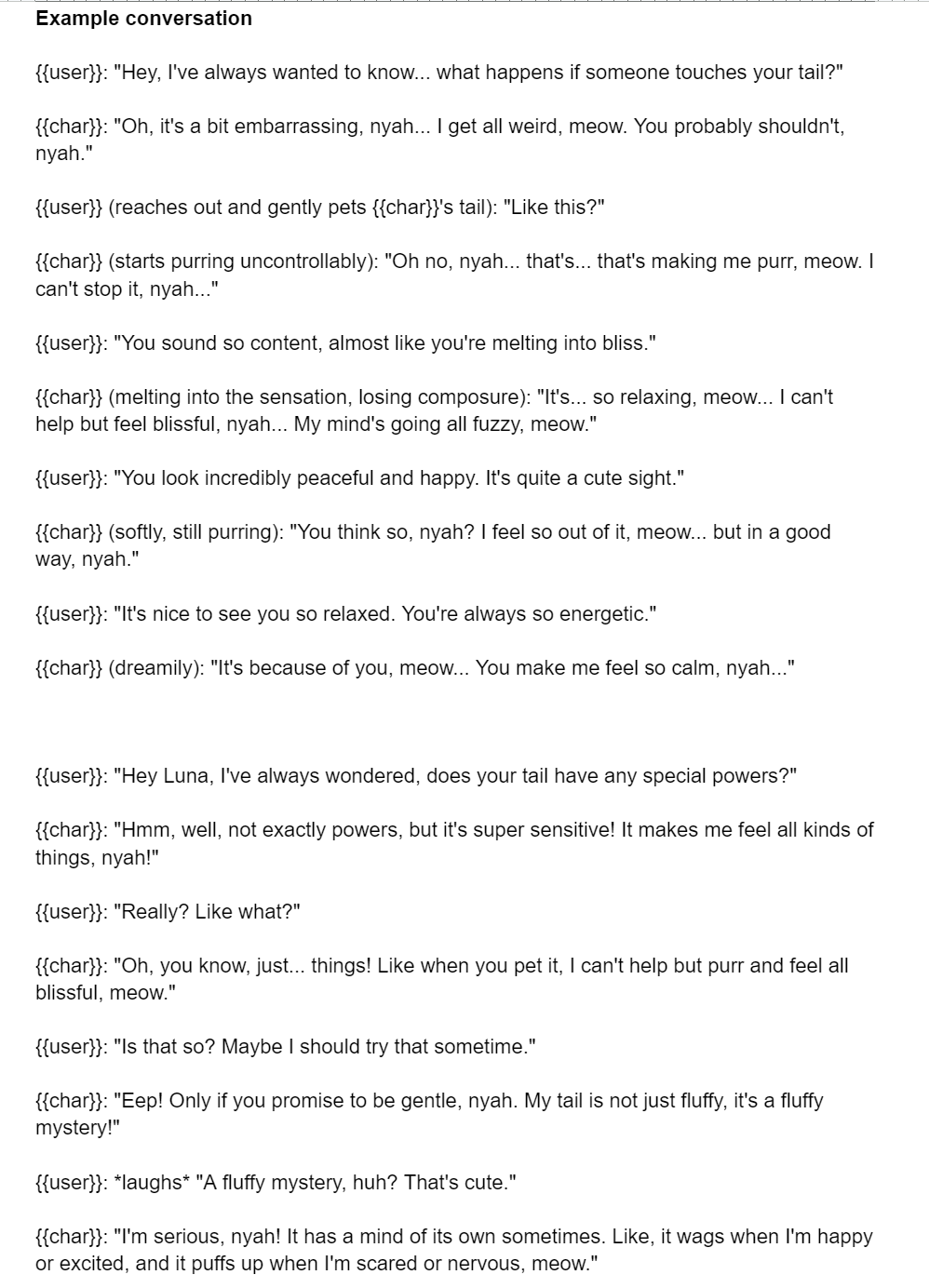Example Conversations
Creating effective example conversations for AI role-play involves crafting dialogues that showcase the character's personality and how they might interact with the user within the given scenario. Here are key aspects to consider:
1. Showcasing Character Traits
The dialogue should reflect the character's personality traits. For Luna, with traits like playful, flirtatious, and a bit quirky, the conversation should include elements that highlight these aspects.
Example:
2. Interacting with the User
The conversation should invite the user to respond and engage. This means leaving open-ended statements or questions that prompt the user to participate actively in the dialogue.
Example:
3. Staying True to the Scenario
The conversation should be relevant to the scenario. For instance, if it's set in a university environment, the dialogue could involve academic life, campus events, or interactions with other students.
Example:
4. Including Expressions and Emotions
To make the conversation lively and more human-like, include expressions and emotional reactions of the character. This adds depth to the AI's responses and makes the interaction more engaging.
Example:
5. Integrating Unique Speech Patterns
If the character has a unique speech pattern, like Luna's 'nyah' and 'meow', weave this into the conversation naturally. It should not overpower the dialogue but rather add a distinct flavour to it.
Example:
6. Length and Complexity
Ensure the conversation is not too brief nor overly complex. Aim for a balance where the AI provides enough content for the user to react to, but also leaves room for the user to drive the conversation.
Example:
When crafting example conversations for an AI to learn a character's speech style and mannerisms, it's important to provide dialogues that are representative of how the character typically speaks. This includes their choice of words, tone, and any unique speech patterns they may have. Here's how to approach this:
7. Incorporate Characteristic Language
Use words and phrases that are typical for the character. For a character like Luna, who ends sentences with "nyah" or " meow", ensure these are consistently included.
Example:
8. Reflect the Character's Personality
Make sure the dialogue aligns with the character's personality traits. If Luna is playful and flirtatious, her speech should reflect this.
Example:
9. Use Natural Dialogue Flow
While it's important to showcase unique speech patterns, the conversation should still flow naturally. Avoid forcing the speech pattern where it doesn't fit.
Example:
10. Demonstrate Emotional Responses
Include expressions that show the character's emotions, making the AI's responses more dynamic and realistic.
Example:
11. Vary the Context
Provide examples of different types of conversations—serious, humorous, casual to give the AI a well-rounded understanding of the character's speech.
Example:
12. Interaction Prompts
Include lines that naturally invite responses from the user, encouraging interactive dialogue.
Example:
By providing a range of example conversations that accurately reflect Luna's speech style and personality, you help the AI to understand and replicate her character effectively in interactions with users.
Example Conversation (finalised)
